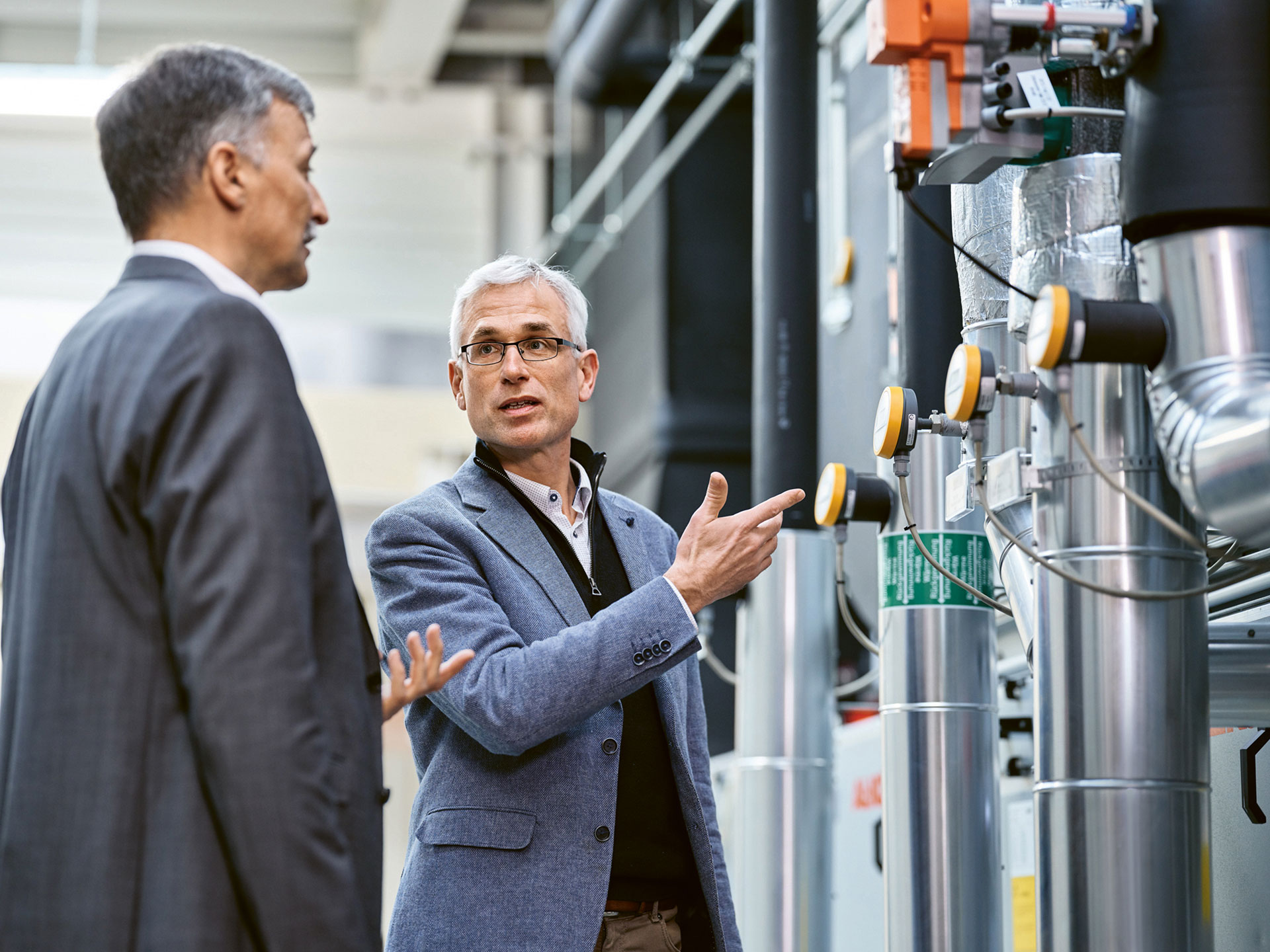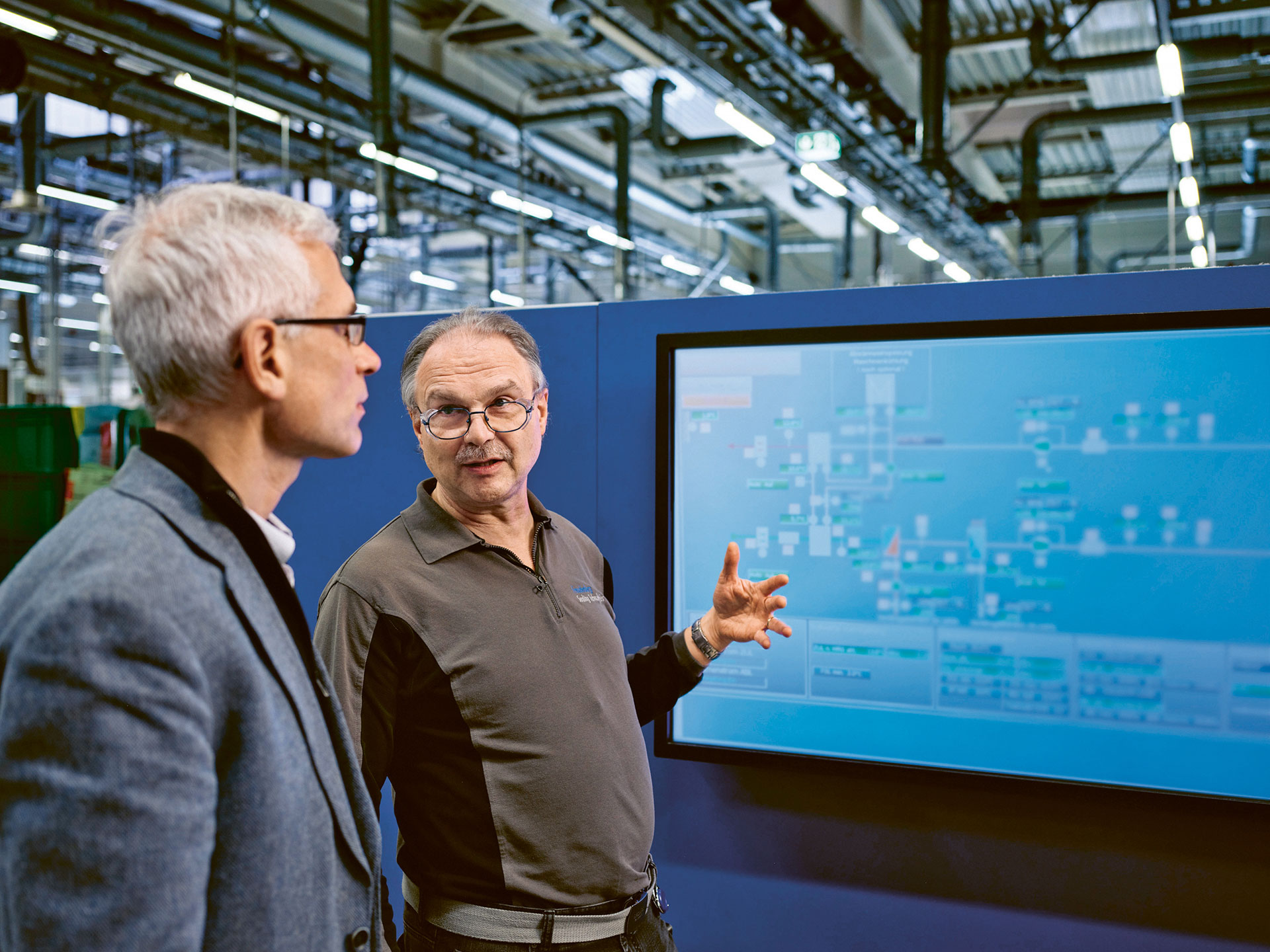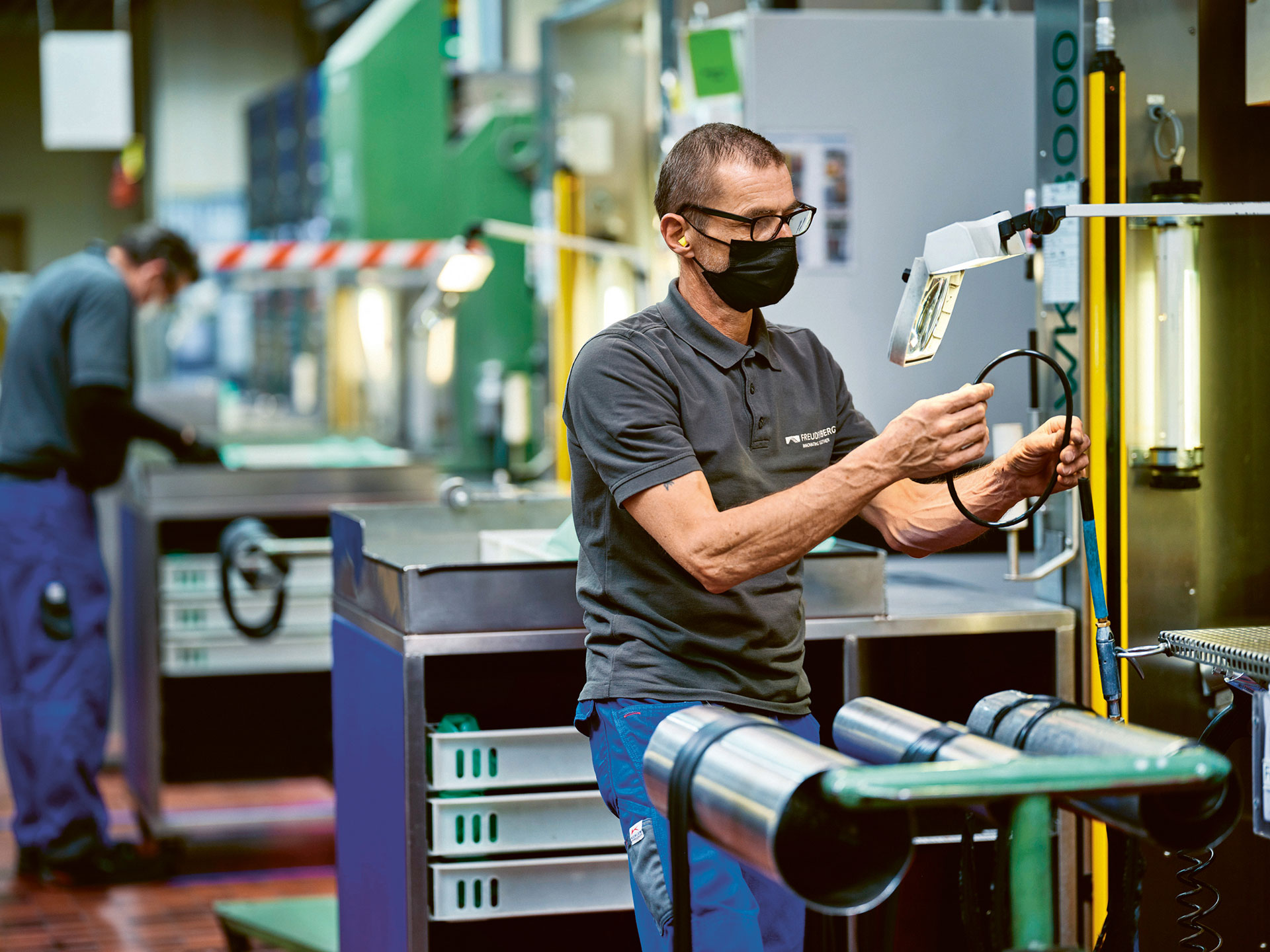Pragmatism wins the day
Consistent, unwavering, meticulous work – rather than big goals – paves the way for reducing CO2 emissions from manufacturing. Nowhere is this more evident than during a visit to the facility in Oberwihl, where Freudenberg Sealing Technologies produces more than one billion seals each year – with an ever-improving carbon footprint.
This story would not exist, if the only thing that mattered was the “here and now”. Even before the start of the factory tour, Hans Bruno Hänle explains the dilemma facing every manufacturing facility on the path toward climate neutrality. As commercial manager of the division that produces more than one billion seals each year in the southern part of Germany’s Black Forest, he keeps a close watch on all the figures. “When we apply traditional financial KPIs, investments in climate protection measures are often not profitable,” he says. “But if we adopt a long-term perspective, we have to consider other developments, including the rise in fossil fuel prices, for instance.” For a growing number of customers, a supplier’s carbon footprint is an increasingly important procurement criterion. Oberwihl is setting new standards among Freudenberg’s German facilities, when it comes to the journey to climate neutrality, both in ecological as well as in economic terms.
Role model for Group-wide sustainability initiative
It all goes back to an analysis initiated by the Freudenberg Group Management Board in 2019 in the search for two role model locations, and the journey is ongoing. Oberwihl was not chosen by coincidence. Following years of hard and meticulous work, the site’s management had already significantly improved building energy efficiency and installed a monitoring system to closely monitor the energy consumption of individual manufacturing cells.
Perseverance and pragmatism in planning and implementation pay off.
Bruno Hänle, Commercial Manager

Hans Bruno Hänle and Dr. Rainer Weiss discuss the technical indoor air system’s energy monitoring.
That marked the foundation for the first step in the analysis, which was conducted by an external energy service provider. At that time, the facility’s energy needs yielded annual CO2 emissions of some 4,500 tons, 87 percent of which were attributable to the use of externally purchased electricity – a percentage that slightly exceeds the average in the Freudenberg Group. The remaining emissions were the result of burning oil to heat the building. The first step of the analysis focused on measures that could be taken to reduce environmentally harmful emissions. Carbon offset schemes for reforestation, for instance, were excluded.
More concrete measures were identified in a second, considerably more detailed analysis undertaken by a different energy service provider. These can be roughly divided into three sub-categories: first, to raise energy efficiency even further; second, to provide as much heat energy as possible without relying on fossil fuels, and third, to generate as much green electricity locally as is economically feasible. Of all the specific measures taken, the conversion of the building’s heating system is particularly remarkable. The system is gradually being converted to wood chips, a renewable raw material that is abundant in the region and, as a waste product of the timber industry, is readily available to buyers. The installation of two wood-fired boilers with automatic filling is proceeding apace, and the new system is scheduled to become operational in the first quarter of 2023. As part of a second step, the experts are looking into the option of installing a small, combined heat and power plant. “This would allow us to reduce fossil fuel consumption by up to 96 percent,” explains Site Executive Officer Dr. Rainer Weiss.
96 % reduction in fossil fuel consumption: that is the goal of the energy efficiency measures.
Dr. Rainer Weiss, Site Executive Officer

Energy efficiency expert Günther Kaiser explains the integration of the newly installed utilization of waste heat.
Learnings from Oberwihl
The wood chip example clearly shows that the measures taken depend on regional conditions and on the local production processes. “If our facility was located in an urban area, the use of wood would be less suitable,” says Hänle. Nevertheless, he firmly believes that Freudenberg’s sites can learn from each other, especially when it comes to systematic analysis. He recommends that external advisers always play a role. “Independent energy consultants not only have an unbiased view. They are also familiar with the various regional subsidies.” Wood chip heating in Oberwihl, for instance, receives public subsidies that help to accelerate the payback. When it comes to energy monitoring, there is even more room to learn from other sites. To evaluate specific measures – for example, the replacement of the drives for a mixer or a rolling mill – it is necessary to first calculate the actual energy consumption. “There’s no need to reinvent the wheel all the time. That, after all, is the big advantage of being part of a globally active technology group,” says Hänle.
Perhaps even more important than the individual building blocks is another finding from the progress made in Oberwihl. It is not the big bang that wins at the end of the day. “When it comes to planning and implementing specific measures, perseverance and pragmatism pay off,” says Hänle. He enjoys working for a group that takes such a long-term approach. As the example of Oberwihl shows all too well: in adopting a methodical, step-by-step approach, sustainability can be achieved in all its different dimensions.

O-Ring process check